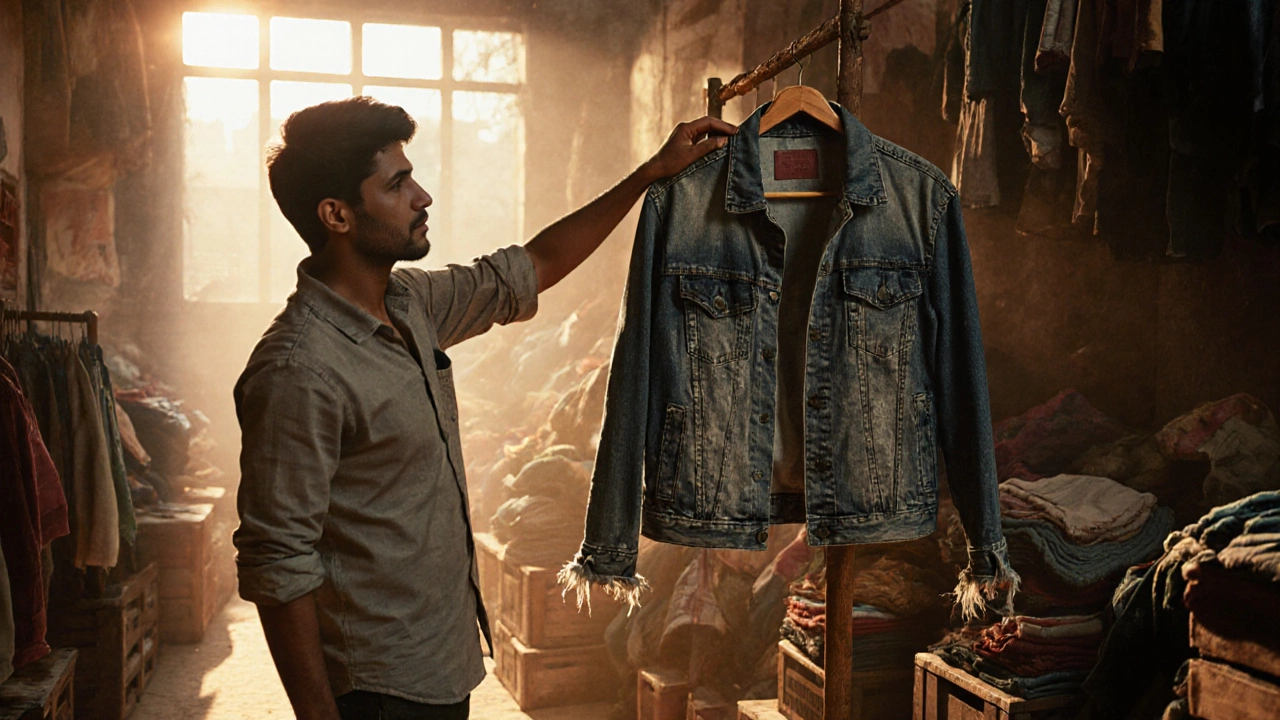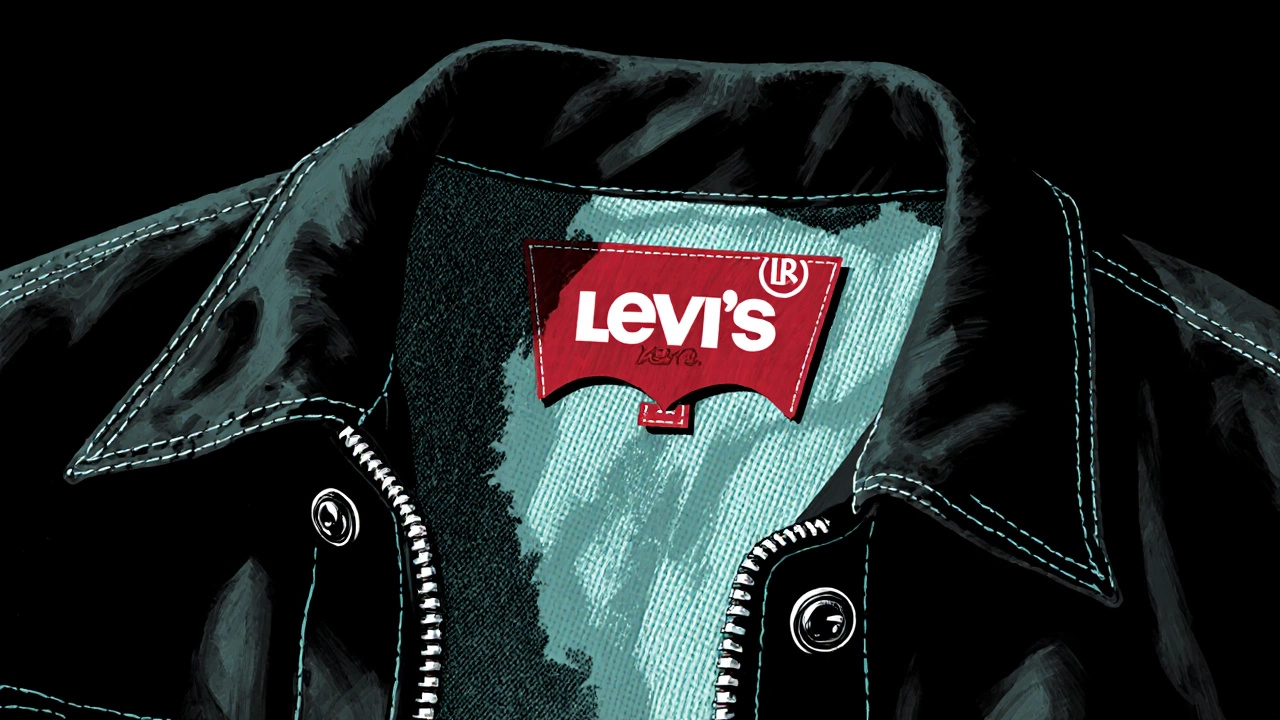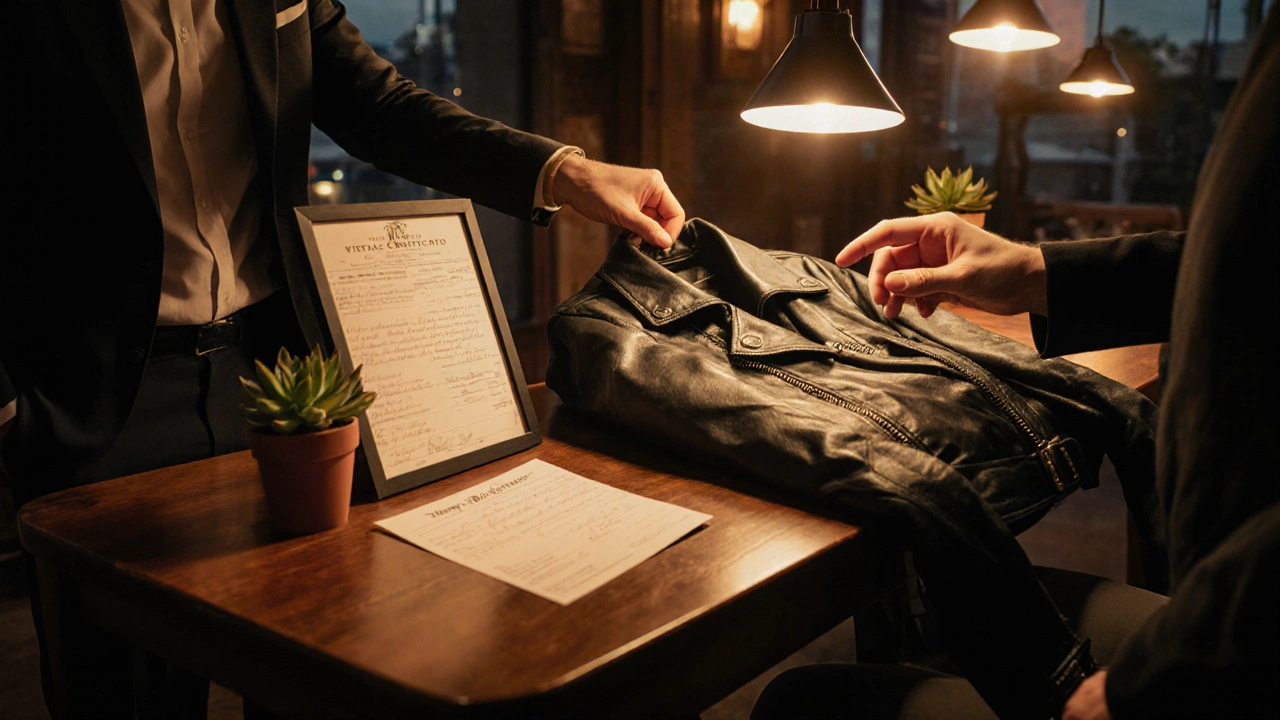How Old Does a Jacket Need to Be to Be Considered Vintage?

Vintage Jacket Age Calculator
Determine Vintage Status
Results
Important: Vintage status requires both age (20+ years) AND original features. Check fabric, hardware, and tags for authenticity.
When you spot a cool old jacket at a thrift store, you probably wonder whether it truly counts as vintage. The answer isn’t a single year-it’s a mix of age, style, cultural relevance, and condition. This guide walks you through the exact criteria that turn a regular old coat into a coveted vintage piece, shows how different jacket types line up on the timeline, and gives you a step‑by‑step checklist to verify the vintage jacket age before you pull out your wallet.
What Defines a Vintage Jacket?
Vintage jacket is a garment originally produced at least 20 years ago that still reflects the design language and cultural moment of its era. The 20‑year rule is a widely accepted baseline among collectors, but it’s not the only factor. A jacket also needs:
- Original fabrics or trims (no major re‑sleeving or fabric replacement).
- Stylistic cues that were iconic for a specific decade.
- Proof of provenance, such as original tags, purchase receipts, or a credible resale story.
When these boxes are checked, the piece moves from "old" to "vintage" in the eyes of both fashion historians and resale platforms.
Key Fashion Eras and Typical Jacket Ages
Understanding the broader timeline of fashion helps you spot the sweet spot where a jacket’s age meets its cultural relevance. Below is a quick snapshot of major eras and the jackets that defined them:
| Era | Years Produced | Signature Jackets |
|---|---|---|
| 1970s | 1970‑1979 | Denim trucker, suede fringe, military surplus |
| 1980s | 1980‑1989 | Bomber, leather biker, windbreaker |
| 1990s | 1990‑1999 | Denim overshirt, varsity, oversized puffer |
| 2000s | 2000‑2009 | Tech‑fabric shell, designer logo jackets |
Because we’re in 2025, a jacket from the early 2000s is already 20‑plus years old and meets the age threshold, while a 1995 bomber is comfortably 30 years old and carries a strong retro appeal.
How to Date a Vintage Jacket: Practical Steps
- Check the label. Look for brand tags, care labels, and country‑of‑origin stamps. Many labels changed logos in the early ’90s; a “Levi’s®” tag with a red tab indicates pre‑1990 production.
- Identify fabric technology. Synthetic blends like polyester‑nylon tricot emerged in the early ’80s. If the jacket uses “Nylon 6/6” with a shiny finish, it likely belongs to the 1985‑1992 window.
- Analyze hardware. Zippers made by “YKK” before 1990 have a distinctive “YKK” emboss; later versions switched to “YKK®”. Snap buttons with “metallic coating” were popular in 1970s workwear.
- Assess style details. Features such as a “double‑vented back” on a wool coat point to 1960s‑1970s tailoring, whereas a “cropped, high‑neck” silhouette aligns with late‑1990s streetwear.
- Research provenance. Ask the seller for original purchase receipts, old photographs, or a story tying the piece to a specific event (e.g., a 1992 concert tour).
Cross‑reference each clue with online databases or brand archives; many heritage brands keep digitized lookbooks that make pinpointing a year easier.

Common Jacket Styles and Their Age Ranges
Below is a comparison of popular jacket categories, their typical production windows, and the age you’d expect for a vintage classification.
| Jacket Type | Typical Production Years | Current Vintage Age (2025) |
|---|---|---|
| Denim jacket - classic workwear | 1965‑1995 | 30‑60 years |
| Leather biker jacket - 1970s rebel style | 1970‑1990 | 35‑55 years |
| Military jacket - field & pea coat lines | 1940‑1990 | 35‑85 years |
| Bomber jacket - post‑war aviation | 1950‑1995 | 30‑75 years |
| Tech‑fabric shell - early 2000s performance wear | 2000‑2009 | 16‑25 years |
Notice that even the youngest category, the early‑2000s tech shell, just crossed the 20‑year mark, making it eligible for vintage status in 2025.
Condition, Provenance, and Vintage Certification
Age alone doesn’t guarantee value. Collectors use a grading system similar to comics or baseball cards:
- Mint (M): No visible wear, original threads intact.
- Near‑Mint (NM): Small scuffs, but all original components present.
- Excellent (EX): Noticeable wear on elbows or cuffs, still wearable.
- Good (G): Faded colors, minor stitching issues, may need repair.
When a broker issues a Vintage certification - a document that records the jacket’s age, brand history, and condition grade, it boosts buyer confidence and often raises resale price by 15‑30%.

Where to Verify Vintage Status and Resale Tips
If you’re based in Canada, the Pacific Northwest has a thriving vintage scene. Shops in Vancouver, such as Red Rack Vintage and Granville Island Antiques, employ staff who can authenticate a jacket on the spot. Online platforms like Vestiaire and Grailed also have dedicated “vintage” categories where sellers must list the production year or era.
When posting a jacket for resale, follow these best practices:
- Provide clear, high‑resolution photos of the tag, lining, and any hardware.
- State the exact production range you’ve identified (e.g., “1992‑1994 Levi’s denim jacket”).
- Include the condition grade and any known repairs.
- Quote the age and reference a reputable source (brand archive, museum catalog, or expert appraisal).
Buyers appreciate transparency; a well‑documented age story can fetch a premium over a similar jacket with vague dates.
Frequently Asked Questions
How many years must a jacket be to be called vintage?
The industry generally uses a 20‑year rule: if the jacket was made at least 20 years ago and retains its original style, it qualifies as vintage.
Can a jacket that’s been altered still be vintage?
Minor alterations like a new button can be acceptable if the core fabric and silhouette remain unchanged, but major rewrites (re‑sleeving, fabric replacement) usually disqualify it.
What’s the difference between ‘vintage’ and ‘retro’?
‘Vintage’ refers to an authentic piece from the past, while ‘retro’ describes a new item that imitates an older style.
How do I verify the age of a jacket without tags?
Examine stitching patterns, fabric composition, and hardware. Cross‑reference these clues with brand archives or fashion history guides that document when specific features were introduced.
Is a 1998 denim jacket considered vintage in 2025?
Yes. By 2025 the piece is 27 years old, surpassing the 20‑year benchmark, so it’s classified as vintage.
Armed with these guidelines, you can confidently label, buy, or sell jackets that truly belong in the vintage realm. Happy hunting!